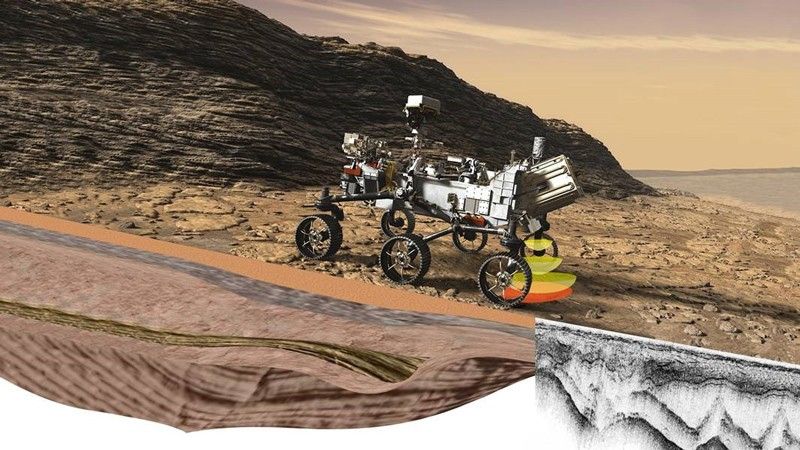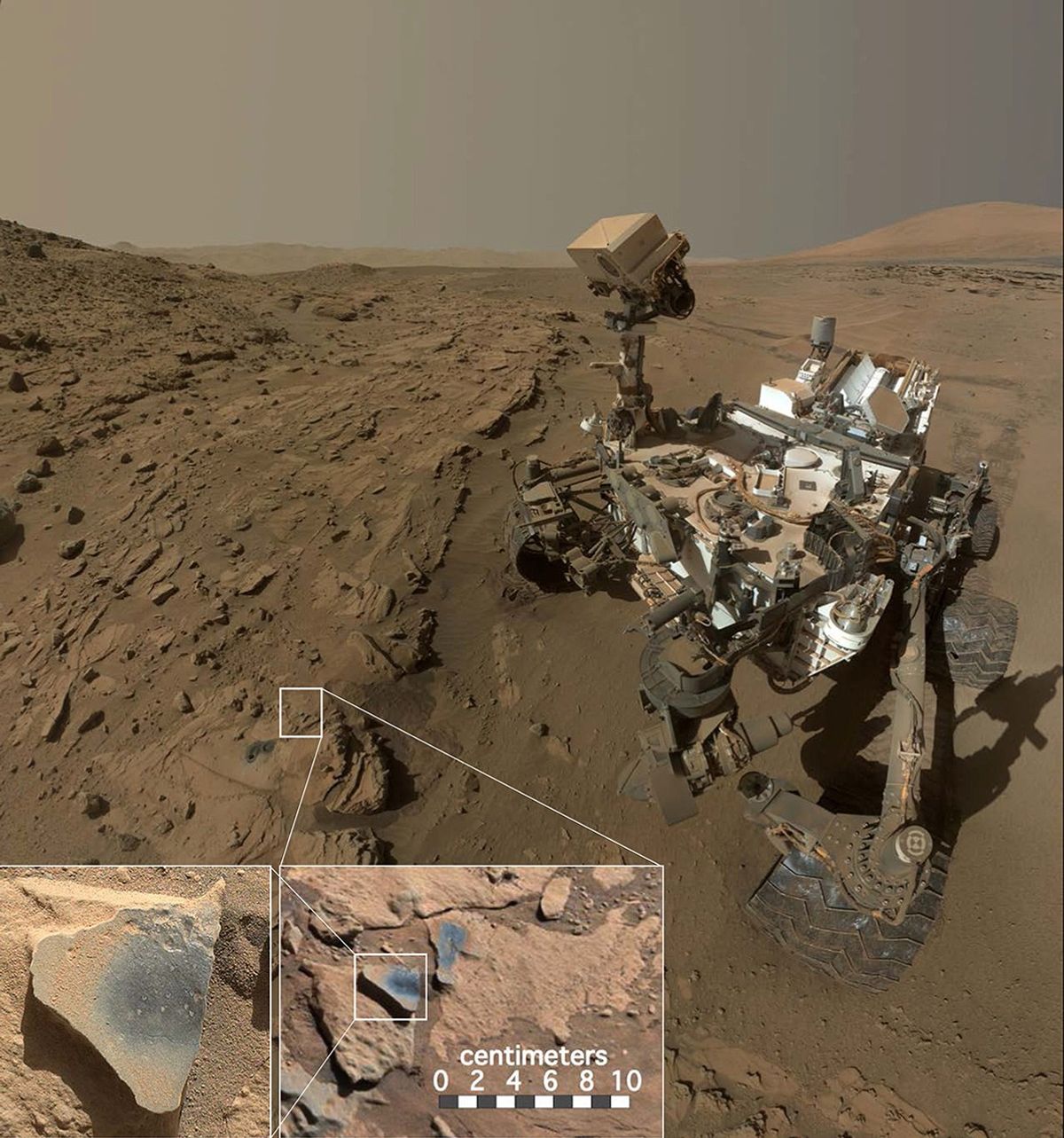Mars, our neighboring planet, has long fascinated scientists with its rusty red surface and hints of a wetter past. Billions of years ago, this world was not the dry desert we see today but a place with flowing rivers, vast lakes, and possibly even oceans. Recent explorations by NASA’s rovers have peeled back layers of time, revealing ancient riverbeds carved into craters like Jezero and Gale. These discoveries, made possible by advanced instruments on the Perseverance and Curiosity rovers, show how water shaped Mars’s landscape, leaving behind sediments and minerals that tell a story of environmental change (NASA, 2023). For instance, radar scans and rock samples collected in the last few years confirm that water flowed vigorously, depositing materials that could have supported life.
The excitement builds as these findings come from ongoing missions. Perseverance, landing in Jezero Crater in 2021, has traversed an ancient delta where a river once emptied into a lake, collecting samples that might hold organic compounds. Meanwhile, Curiosity, exploring Gale Crater since 2012, has climbed a mountain formed from lake sediments, uncovering signs of repeated wet and dry periods. These revelations, updated as recently as 2024, draw from direct observations and lab-like analyses on Mars, making it feel like we’re witnessing a planetary history unfold in real time (Farley et al., 2024). It’s like piecing together a puzzle from another world, with each rock offering a clue.
But what exactly do these ancient riverbeds reveal about Mars’s transformation from a watery haven to a cold, arid planet?
How Did Ancient Rivers Form on Mars?
Ancient rivers on Mars formed billions of years ago when the planet had a thicker atmosphere that allowed liquid water to flow on the surface, carving channels and deltas much like Earth’s Mississippi River. Scientists know this from orbital images and rover data showing valley networks and sediment layers, indicating water persisted for long periods, perhaps hundreds of millions of years. For example, in Jezero Crater, a 45-kilometer-wide (28-mile) basin, water from a feeding river deposited fan-shaped sediments, creating a delta that advanced into a lake. This process involved gentle flows at first, followed by powerful floods that hurled boulders downstream (Mangold et al., 2021).
To visualize, imagine a river system where water carried rocks and mud, building up layers over time. According to NASA’s Perseverance initial observations, the delta features inclined rock layers called strata, tilted at angles up to 15 degrees, which are classic signs of water-deposited sediments. These layers, some several meters thick, contain fine-grained mudstones (soft rocks from settled mud) at the bottom and coarser conglomerates (pebble-filled rocks) on top, showing a shift from calm lake conditions to high-energy floods. Fun fact: Some boulders in these deposits measure up to 1.5 meters (5 feet) across, suggesting flood speeds of around 6 to 9 meters per second (20 to 30 feet per second), powerful enough to move large debris.
Rivers like these likely existed during Mars’s Noachian period, about 3.7 to 4.1 billion years ago, when volcanic activity and a magnetic field might have trapped heat and water. However, as the atmosphere thinned due to solar wind stripping, water froze or evaporated, leaving dry riverbeds. Bullet points for key evidence:
- Valley networks spanning thousands of kilometers, visible from orbit.
- Mineral deposits like clays and sulfates, formed in water.
- Erosion patterns matching Earth’s river carvings.
If data varies slightly across sources, such as delta thickness estimates ranging from 100 to 200 meters, it reflects measurement uncertainties from different instruments. Suggest viewing NASA’s delta diagrams for a clear picture of how these rivers sculpted the terrain.
What Has the Perseverance Rover Discovered in Jezero Crater?
The Perseverance rover has uncovered compelling evidence of an ancient lake and river system in Jezero Crater, confirming it was once a habitable environment with flowing water. Since landing in February 2021, the rover has driven over 20 kilometers (12 miles), examining rocks that show a history of water activity. One major find is the confirmation of lake sediments beneath the crater floor, detected by the rover’s ground-penetrating radar called RIMFAX (Radar Imager for Mars’ Subsurface Experiment). This instrument peered up to 20 meters (65 feet) deep, revealing horizontal layers of sediments deposited by water, with some areas showing wavy patterns from wave action in the ancient lake (Farley et al., 2024).
Think of it as an underground scan, like a medical ultrasound, showing how the lake filled and dried multiple times. According to NASA’s RIMFAX radar study, the sediments include fine silts and sands, layered evenly, indicating calm water deposition before erosion exposed them. In 2024, Perseverance found a rock called Cheyava Falls with “leopard spots” – white splotches surrounded by black rings – possibly formed by chemical reactions in water involving organic molecules and iron. These spots, about 1 millimeter (0.04 inches) wide, hint at past microbial activity, though more analysis is needed.

The rover also collected 24 rock core samples, some from the delta front containing carbonates (minerals that form in water and can trap biosignatures). Organic compounds, building blocks of life, were detected in these samples using the SHERLOC instrument (Scanning Habitable Environments with Raman & Luminescence for Organics & Chemicals), which uses lasers to identify molecules. Fun comparison: It’s like finding fossilized river mud on Earth that preserves ancient microbes. Bullet points for discoveries:
- Delta sediments with boulder conglomerates from floods.
- Organic-rich rocks in ancient river channels.
- Radar evidence of lake levels fluctuating by tens of meters.
Uncertainties exist, like exact water duration, estimated between 10,000 to 100,000 years based on sediment rates. For complex data, refer to NASA’s stratigraphic charts showing layer sequences.
What Evidence of Water Did Curiosity Find in Gale Crater?
Curiosity rover has revealed signs of ancient lakes and rivers in Gale Crater, a 154-kilometer-wide (96-mile) basin with a central mountain called Mount Sharp, formed from layered sediments deposited in water. Since 2012, the rover has climbed over 30 kilometers (18 miles) up the mountain, analyzing rocks that record a transition from wet to dry conditions. A key discovery in 2024 was manganese-rich rocks in lakebed deposits, with manganese oxide levels up to 45% by weight, suggesting oxygen was present in the ancient water – unusual for early Mars (Gasda et al., 2024).
This implies the water was oxygenated, perhaps from atmospheric interactions or groundwater, in a river-fed lake system. According to NASA’s Curiosity manganese study, these minerals formed in shallow, oxygen-rich waters along ancient shorelines or riverbeds. In the Gediz Vallis channel, interpreted as a late-stage riverbed, Curiosity found evidence of debris flows – mixtures of rocks and mud carried by water floods – with boulders up to 0.5 meters (1.6 feet) across.

Another surprise was pure sulfur rocks cracked open in 2024, formed by water altering volcanic materials, indicating hydrothermal activity in river settings. These yellow crystals, nearly 100% sulfur, suggest hot springs or evaporating pools. Fun fact: On Earth, similar features host microbes. Bullet points:
- Layered mudstones from persistent lakes, 3 kilometers (1.8 miles) thick.
- Sulfate salts from drying water bodies.
- Wet-dry cycles preserved in rock patterns.
Measurements vary slightly, like lake depth estimates from 100 to 500 meters, due to erosion over time. Suggest NASA’s timeline figures to illustrate the water history.
Could These Riverbeds Hold Signs of Past Life?
Ancient riverbeds on Mars might preserve signs of past life, as they provided wet, nutrient-rich environments where microbes could thrive, similar to Earth’s early habitats. In Jezero, organic molecules in delta rocks suggest carbon-based chemistry, essential for life, though they could be abiotic (non-biological). The Cheyava Falls rock’s features, including olivine (a mineral from volcanic rock) and phosphates (nutrients for life), point to potential redox reactions (energy-producing chemical exchanges) in water (NASA, 2024).
In Gale, clay minerals and organics in river sediments indicate habitable conditions for at least millions of years. However, no definitive biosignatures yet; uncertainties include contamination or alternative origins. Bullet points:
- Organic detection in multiple samples.
- Chemical gradients for energy.
- No confirmed life, but high potential.
For visuals, NASA’s sample analysis diagrams help.
What Do These Findings Tell Us About Mars’s Climate History?
These discoveries show Mars had a warm, wet climate that turned cold and dry, losing most water to space or underground. Riverbeds indicate cycles of flooding and drying, with atmospheric loss causing the shift around 3 billion years ago (NASA, 2023).
Conclusion
Mars’s ancient riverbeds reveal a planet once alive with water, from deltas in Jezero to channels in Gale, offering clues to habitability. These findings, backed by rover data, highlight a lost watery world. Will returned samples confirm if life ever emerged there?
Sources
Farley, K. A., et al. (2024). Aqueously altered igneous rocks sampled on the floor of Jezero crater, Mars. Science Advances, 10(3), eadn5512. https://www.science.org/doi/10.1126/sciadv.adn5512
Gasda, P. J., et al. (2024). Manganese-rich sandstones as an indicator of ancient oxic lake water conditions in Gale crater, Mars. Journal of Geophysical Research: Planets, 129(5), e2023JE008187. https://agupubs.onlinelibrary.wiley.com/doi/10.1029/2023JE008187
Mangold, N., et al. (2021). Perseverance rover reveals an ancient delta-lake system and flood deposits at Jezero crater, Mars. Science, 374(6568), 711-717. https://www.science.org/doi/10.1126/science.abl4051
NASA. (2023, December 12). NASA’s Perseverance rover deciphers ancient history of Martian lake. NASA. https://www.nasa.gov/missions/mars-2020-perseverance/perseverance-rover/nasas-perseverance-rover-deciphers-ancient-history-of-martian-lake/
NASA. (2024, July 25). NASA’s Perseverance rover scientists find intriguing Mars rock. NASA. https://www.nasa.gov/missions/mars-2020-perseverance/perseverance-rover/nasas-perseverance-rover-scientists-find-intriguing-mars-rock/
📌 Frequently Asked Questions
Did NASA’s Perseverance rover find evidence of ancient water on Mars?
Yes, Perseverance confirmed ancient lake sediments and river deltas in Jezero Crater using radar and images. The layers show water deposited materials over time, with floods shaping the landscape. According to NASA’s 2023 lake update, this system existed billions of years ago (NASA, 2023).
What minerals did Curiosity discover in Mars’s ancient lakebeds?
Curiosity found manganese oxides and sulfates in Gale Crater’s lakebeds, indicating oxygenated water and drying phases. These minerals form in wet environments and suggest habitability. The manganese levels were unexpectedly high, as per NASA’s 2024 rock study (Gasda et al., 2024).
How old are the riverbeds on Mars?
Mars’s riverbeds are about 3.5 to 4 billion years old, from the Noachian era when water flowed freely. Rover data from sediments dates these features precisely.
Did Mars have rivers like on Earth?
Mars had rivers similar to Earth’s, but shorter-lived due to climate change. They carved valleys and deposited deltas, with flow rates comparable to terrestrial floods.
What organic molecules were found in Mars riverbeds?
Organics like carbon compounds were detected in delta rocks, potential life building blocks, but could be non-biological. Perseverance’s instruments identified them in samples.
How deep were the ancient lakes on Mars?
Ancient lakes like in Jezero were up to hundreds of meters deep, based on sediment thicknesses and crater morphology, with levels fluctuating over time.
What caused Mars’s rivers to dry up?
Loss of atmosphere from solar wind stripped away water, causing rivers to freeze or sublimate around 3 billion years ago, turning Mars arid.
Has any rover found fossils in Mars riverbeds?
No fossils found yet, but features like leopard spots in rocks suggest possible microbial traces, needing further study for confirmation.
What is the Gediz Vallis on Mars?
Gediz Vallis is an ancient river channel in Gale Crater explored by Curiosity, showing debris flows and wet-dry cycles from water activity.
Will Mars sample return reveal more about ancient riverbeds?
Yes, samples from Perseverance could analyze sediments for life signs and water history when returned to Earth in the 2030s.
